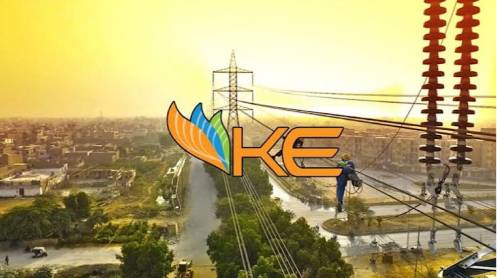Pakistan’s precarious financial situation, persisting for the last many decades, has landed it into a deep debt trap where an overwhelming part of tax revenue is consumed in debt servicing alone. This is done at the expense of developmental and social protection reforms, which are eventually ignored. Pursuant to section 13(i) and (r) of Fiscal Responsibility and Debt Limitation Act, 2005 (as amended up to 2022), the Ministry of Finance has published Annual Debt Review for FY 21-22, which provides details about the debt statistics, maps them against the latest fiscal year, and also against the fiscal goals envisaged by the government.
The Debt Policy states that as of 30 June 2022, Domestic Public Debt reached Rs 31.3 trillion as compared to Rs 26.2 trillion on 30 June 2021. The key drivers for increase in public debt are primary deficit of Rs 2.42 trillion, interest expense of Rs 3.18 trillion and share of adverse performance of exchange rates that stood at Rs 3.764 trillion. Similarly, on external front, Pakistan’s External Public Debt is recorded at US$ 88.8 billion as on June 30 2022 as compared to US$ 86.5 Billion on 30 June 2021.
Pakistan’s external public debt is sourced from three major contributions, with around 48% from multilateral loans, 30% from bilateral loans, and 22% from commercial sources like banks, Eurobonds and Sukuks. It is pertinent to mention that increased level of external debt can pose a great risk to fiscal framework of an economy especially when current account deficit is high, foreign exchange reserves are at low levels and the exchange rate is under pressure.
Pakistan is repeatedly facing the same situation where debt payments are falling as short term borrowing create liquidity crunch which is destabilising the exchange rate and also adversely impacting the overall economic outlook of the country. Decline in the exchange rate is also increasing the debt burden of external loans measured in local currency. Containing exposure to external debt is important to manage the exchange rate risk, which is being witnessed since end of September 2022.
The Debt Policy states that the Ministry of Finance (MoF) has set a benchmark (maximum limit) of 40% for the share of external debt in total public debt. The policy report further highlighted that the share of external debt in total public debt increased from 34% in 2020-21 to 37% in 2021-22. However, it remained below the benchmark (maximum limit) of 40% with the observation that increase in debts was attributable mainly to exchange rate depreciation rather than excessive external borrowings. It is an undisputed fact that a country like Pakistan where current account deficit and exchange related challenges frequently arise impacting the country’s economy, the profile and tenure of debt can play a critical role in its overall economic outlook.
As a measure of prudent financial management, the MoF has set a benchmark of 3.5 years for Average Time to Maturity (ATM) of domestic debt and 6.5 years for ATM of external debt. However, the target ATM for domestic debt was 4 years and 7 years for external debt for Financial Year 2022, whereas in reality the Average Time to Maturity (ATM) of external debt declined sharply from 6.8 years in Financial Year 2021 to 6.2 years recorded below the target of 7 years.
This decline has directly jeopardized foreign reserves therefore Pakistan is reaching out to friendly countries and other lenders to bridge the gap and cover short-term liabilities. This decline is attributed to multiple factors. The government’s recent publication on debt states that recently it has borrowed significant amounts from commercial sources including medium to long-term Eurobonds and short-term bank loans. Eurobonds generally have tenure of 5 and 10 years, whereas bank loans typically have maturities of one year and similarly most of the bilateral loans obtained in recent years have relatively shorter maturities. Likewise, on the domestic front, the ATM of domestic debt remained at 3.6 years in FY 2022, indicating that the government needs to lower the fiscal deficit by ensuring a better fiscal discipline so that borrowing needs are curtailed.
The Debt Policy states that in the future the government would prefer longer maturity instruments to achieve desired ATM level. It is a fact that Pakistan’s borrowing needs are increasing with every passing day. The high interest rate environment and associated service cost are also consuming a large fiscal space. On the contrary, Pakistan is not ready to introduce fiscal reforms to curtail wastage of revenue.
Pakistan’s GDP growth since 2018 is continuously declining and rated as lowest in the region. The revenue targets are being met through oppressive and indirect taxation measures which on one hand are raising the cost of doing business and on the other, making it tough for small and medium enterprises (SMEs) considered as backbone of economy, to carry on their operations.
Still, the government is not ready to undertake structural reforms agreed with the International Monetary Fund (IMF) related to circular debt and management of state owned enterprises (SOEs). Moreover, reliance on indirect taxes for meeting revenue goals is also a major issue meaning thereby that government should improve its taxation system if it wants to create a business friendly environment.
We need a comprehensive plan to revamp or privatize SOEs as a significant portion of our revenue is directed towards these loss-making entities whereas the same can be used for developmental projects to facilitate businesses and public at large. Such projects will not only improve our infrastructure but also help to generate sufficient revenue to invest in the social sector.
Further, new avenues for revenue must be explored so as not to burden the already tax-paying community. This would enable the government to fulfill its financial requirements through organic means rather than relying on expensive borrowings. Similarly, exports, home remittances and a positive foreign direct investment (FDI) balance can offset import requirements. Pakistan’s reliance on traditional exports is responsible for poor foreign exchange reserves. Keeping in view the new era of industrial. revolution, Pakistan should focus on tech based exports to increase the share of its exports.
Moreover, we ought to work on improving our bilateral trade as well. It is astonishing that despite its location between the world’s two most populous countries, the share of our exports with both is lower than the value of our exports to the United States. Additionally, FDI which is being recorded as low since last few years cannot be increased with current policy rates and fluctuation in the currency. We will have to create a business friendly environment offering lowest cost of doing businesses so that we can attract maximum FDI. These initiatives will help us in bridging the fiscal gap, otherwise we will remain trapped in a vicious circle, where we borrow more to repay existing debts.
(Huzaima Bukhari & Dr. Ikramul Haq, lawyers and partners of Huzaima, Ikram & Ijaz, are Adjunct Faculty at Lahore University of Management Sciences (LUMS), members Advisory Board and Visiting Senior Fellows of Pakistan Institute of Development Economics (PIDE). Abdul Rauf Shakoori is a corporate lawyer based in the USA and an expert in ‘White Collar Crimes and Sanctions Compliance’)





